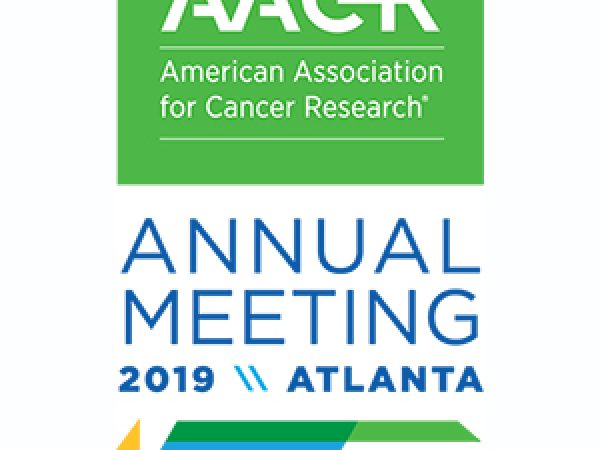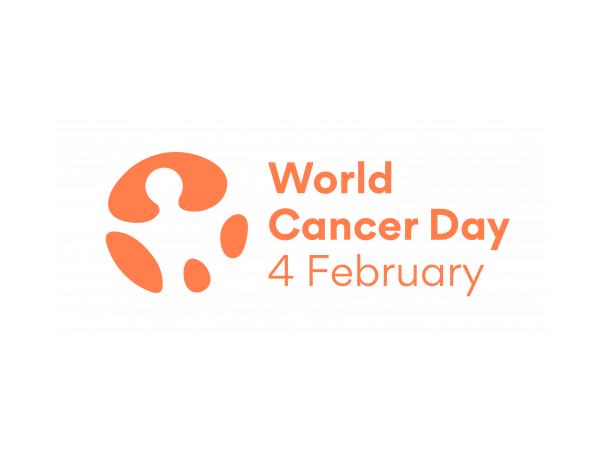AACR Annual Meeting 2019: A Record Year for Clinical Trials Presentations
Over the course of AACR Annual Meeting 2019, there were 213 presentations on incredibly exciting clinical trials. This is a record number of clinical trial presentations for an AACR Annual Meeting. The trials presented covered the continuum of cancer treatment, from surgery, to radiotherapy and chemotherapy, to the two newest pillars of cancer care—molecularly targeted therapy and immunotherapy. The final clinical trials plenary session of the Annual Meeting epitomized this diversity by showcasing clinical trials reporting new ways to combine radiotherapy with other types of treatment, and new advances in immunotherapy and molecularly targeted therapy.
Combining radiotherapy with other types of treatment
Radiotherapy to shrink or eliminate tumors, or to prevent local recurrence, forms part of the treatment for about 50 percent of patients with cancer, according to radiation oncology experts. In the final AACR Annual Meeting 2019 clinical trials plenary session, Rom S. Leidner, MD, from the Earle A. Chiles Research Institute in Portland, Oregon, and Toshiyoshi Fujiwara, MD, PhD, from Okayama University Graduate School of Medicine in Japan, discussed clinical trials evaluating new ways to use radiotherapy in the treatment of patients with head and neck squamous cell carcinoma (HNSCC) and esophageal cancer, respectively.
Currently, standard treatment for locally advanced oropharyngeal HNSCC associated with human papillomavirus (HPV) infection includes combined chemotherapy and radiotherapy (chemoradiotherapy), or surgery followed by adjuvant radiotherapy and or chemotherapy depending on a patient’s risk for recurrence, Leidner and his colleagues wrote in the abstract for his presentation. These treatment regimens provide high rates of long-term survival, but because they are associated with significant subacute and long-term morbidity, we need new treatment approaches, they noted.
Leidner opened his presentation by discussing the growing body of preclinical and clinical evidence that radiotherapy synergizes with immunotherapy to improve outcomes. These data provided the rationale for the phase I clinical trial he and his colleagues designed and conducted to test presurgery (neoadjuvant) treatment with a form of radiotherapy called stereotactic body radiation therapy (SBRT) in combination with the PD-1–targeted immunotherapeutic nivolumab (Opdivo) for patients with locoregionally advanced, HPV-positive HNSCC who were planning to have surgery. SBRT provides focal delivery of radiation. The researchers administered the radiotherapy using a hypofractionation approach, meaning that the total dose of radiation was divided into a smaller number of larger doses than is normally used.
In the trial, patients received nivolumab once every two weeks for three weeks prior to surgery, with SBRT between the first and second doses of nivolumab. Leidner reported on two cohorts who received different doses of radiation (8 Gray [Gy] once a day for five consecutive days or 8Gy on three days with a day off between doses). There were five patients in each cohort. Surgery was performed five weeks after SBRT, and none of the patients had unplanned delays in surgery, which meant that the primary endpoint of less than 33 percent unplanned surgical delay was met.
The other primary endpoint was treatment-related adverse events (TRAEs). All the toxicities observed after neoadjuvant treatment and before surgery were grade 1 and 2, with mucositis the most common. Several of the patients had delayed (post-operative) grade 3 toxicities, with these toxicities more common among those who received five days of radiation. Six patients had grade 3 oropharyngeal pain after surgery that required treatment with opioids for more than four weeks and three had grade 3 delayed mucosal healing that required placement of a G-tube for feeding for several months. Grade 2 adrenal insufficiency was reported for 50 percent of the patients, which is a higher rate than previously reported amongst HNSCC patients being treated with PD-1–targeted immunotherapy.
Nine of the patients had a complete pathological response, that is, there were no viable tumor cells detected in the tumor removed from these patients during surgery. The remaining patient had a major pathologic response, that is, there were less than 10 percent viable cells detected in the tumor removed during surgery. “The secondary tissue endpoint [pathological response] far exceeded our expectations on this trial,” said Leidner.
Leidner concluded by noting that they are enrolling patients in a radiation-only cohort and they are evaluating the effects of neoadjuvant SBRT and PD-1–targeted immunotherapy in patients with patients with locoregionally advanced, HPV-negative HNSCC.
Christine H. Chung, MD, from Moffit Cancer Center in Tampa, who was the discussant of Leidner’s study, explained that because chemoradiotherapy provides high rates of long-term survival for patients with locally advanced, HPV-positive oropharyngeal HNSCC, one of the main goals of researchers is to identify less toxic treatments without compromising survival. “The toxicities of the neoadjuvant combination are a major concern,” she said. The approach may be more suitable for HPV-negative patients with poor prognosis and in need of treatment intensification, she concluded.
As with HNSCC, chemoradiotherapy and surgery are frequently used to treat patients with esophageal cancer. However, these treatment approaches are relatively invasive and can’t be tolerated by certain patients, such as the elderly, explained Fujiwara in his presentation.
Fujiwara and colleagues designed a phase I clinical trial to test a new virotherapy-radiotherapy combination for patients with esophageal cancer who are unable to receive standard treatment. Fujiwara explained that the experimental oncolytic adenovirus telomelysin (OBP-301) selectively replicates in cells positive for telomerase, which is overexpressed in many cancer cells. It also inhibits the repair of radiation-induced DNA double-strand breaks, leading to radiosensitization.
Fujiwara and colleagues enrolled 13 patients, median age of 80, with esophageal cancer who were unable to receive standard treatment in the trial. The patients received three intratumoral injections of OBP-301 (each injection ranging between 10 billion and 1 trillion viral particles) via endoscope over several weeks with concurrent radiation therapy to a total of 60Gy. One patient withdrew from the trial.
Most of the adverse events experienced by the patients were grade 1 or grade 2 toxicities, including fever, esophagitis, pneumonitis, anorexia, lymphocytopenia, and gastroesophageal reflux. Eight patients had grade 3 lymphocytopenia and two patients had grade 4 lymphocytopenia, but none of these patients had clinical symptoms, said Fujiwara, so they were not classed as severe adverse events.
Only 12 of the patients were evaluable for response, said Fujiwara. Eleven of these patients (91.7 percent) had a response to treatment: Eight had a complete response and three had a partial response. Three of the patients who had a complete response remain alive more than one year to more than four years after treatment and one patient who had a partial response remains alive almost three years after treatment.
“Multiple courses of endoscopic OBP-301 injection with radiotherapy were feasible and provided definite clinical benefits in patients with esophageal cancer, especially who are unfit for standard treatments,” concluded Fujiwara in his presentation.
Geoffrey Y. Ku, MD, from Memorial Sloan Kettering Cancer Center, who was the discussant of Fujiwara’s study, talked about how we can build on these phase I clinical trial data. He explained that in the United States, chemoradiation is the standard treatment for patients with locally advanced esophageal cancer who are unable to undergo surgery for medical reasons such as frailty, rather than radiation alone, as is common in Japan. Thus, we need to investigate the feasibility of combining OBP-301 with chemoradiation if we are to change clinical practice in the United States, he said, before noting that he is in the process of designing such a study.
Combining immune checkpoint inhibitors
Immune checkpoint inhibitors are one of the most recently developed groups of cancer treatments. They work by releasing brakes, called immune checkpoints, on natural cancer-fighting immune cells called T cells. With the brakes released, the T cells are able to carry out their natural function and can destroy cancer cells. Two scientists whose discoveries led to the development of these revolutionary immunotherapeutics—James P. Allison, PhD, and Tasuku Honjo, MD, PhD—were recognized with the Nobel Prize in Physiology or Medicine 2018 for their work in this area.
All but one of the seven immune checkpoint inhibitors approved by the U.S. Food and Drug Administration (FDA) at the time of the AACR Annual Meeting 2019 target the PD-1/PD-L1 T-cell braking pathway. Although these immunotherapeutics yield remarkable and durable responses for some patients with a growing number of cancer types, most patients do not respond in this way. Moreover, some patients whose tumors respond initially to immune checkpoint–inhibitor treatment, eventually relapse because their tumors become treatment resistant. One approach researchers are investigating to determine if it can increase the number of patients who benefit from immune checkpoint inhibitors is combining therapeutics targeting the PD-1/PD-L1 pathway with therapeutics that target other T-cell braking pathways.
Giuseppe Curigliano, MD, PhD, from Istituto Europeo di Oncologia in Milan, Italy, presented preclinical data showing that blocking both PD-1 and an immune checkpoint protein called TIM-3 had significantly greater antitumor activity than blocking either immune checkpoint alone. He also highlighted clinical data suggesting that upregulation of TIM-3 may form part of a resistance mechanism to PD-1/PD-L1–targeted immune checkpoint inhibitors.
These data provided strong rationale for the phase I/II clinical trial Curigliano and his colleagues conducted to evaluate a new combination of investigational checkpoint inhibitors, spartalizumab and MBG453, as a treatment for patients with metastatic solid tumors. Spartalizumab is an investigational PD-1–targeted immune checkpoint inhibitor and MBG453 targets TIM-3. “This is the largest phase I trial combining an anti-TIM3 with an anti-PD-1,” he said.
Curigliano reported results from 173 patients with metastatic solid tumors, 87 of whom received only MBG453. The remaining 86 patients received the spartalizumab–MBG453 combination. Given that we hope to overcome resistance to PD-1/PD-L1–targeted immune checkpoint inhibitors by using a TIM-3–targeted therapeutic, it is important to note that 12 patients in the MBG453 monotherapy arm and 23 patients in the spartalizumab–MBG453 combination arm had received these kinds of treatment before enrolling in the trial, he said.
“Overall the combination was very safe,” said Curigliano. Most of the toxicities were grade 1 or grade 2, with fatigue the most common. However, there were a small number of grade 3 TRAEs, fatigue, hyperglycemia, and increased levels of aspartate aminotransferase, which is a biomarker for liver damage, and one death from grade 4 myasthenia gravis.
The best response seen among the patients who received MBG453 alone was stable disease (24 of 87 patients). Among those who received the combination, 34 had stable disease and four had a partial response, one with small cell lung cancer, one with non–small cell lung cancer (NSCLC), and two with colorectal cancer. The patient with NSCLC who had a partial response had previously been treated with a PD-1–targeted immune checkpoint inhibitor. The other patients who had partial responses had not previously received PD-1/PD-L1–targeted treatment. Considering how heavily pretreated these patients were, the high rate of stable disease is clinically relevant, according to Curigliano.
Discussant David S. Hong, MD, from The University of Texas MD Anderson Cancer Center, commended Curigliano and colleagues for conducting a well-designed, rigorous trial with strong preclinical rationale, but he expressed concern that most of the patients who responded had not previously received PD-1/PD-L1–targeted treatment. The proof-of-concept that the combination can overcome resistance to PD-1/PD-L1–targeted treatment is limited to one patient, Hong explained. Randomizing the phase II clinical trial would provide data to address this point, he concluded.
Molecularly targeted therapy for acute myeloid leukemia (AML)
In November 2018, the FDA approved a new molecularly targeted therapeutic for treating patients who have relapsed/refractory AML that tests positive for a mutation in the FLT3 gene, as reported in a previous post on this blog. The therapeutic in question was gilteritinib (Xospata).
“The FDA approval of gilteritinib was based on safety data and an interim analysis of the rate of response to gilteritinib in the [phase III] ADMIRAL trial; it was not based on a comparison of the efficacy of gilteritinib relative to standard chemotherapy,” said Alexander E. Perl, MD, from the Perelman School of Medicine at the University of Pennsylvania in a press release. Perl expanded on this during his Annual Meeting presentation, explaining that until now, no therapeutic has been approved for relapsed/refractory AML on the basis of superiority in a randomized controlled trial.
Perl also highlighted the urgent need for new treatments for relapsed/refractory AML. Among patients newly diagnosed with AML, 10 percent to 40 percent do not achieve complete remission with intensive induction chemotherapy and are said to be refractory, and 40 percent to 70 percent of those who do achieve complete remission with intensive induction chemotherapy ultimately relapse, he said. Patients with relapsed/refractory AML have short survival and poor response to salvage chemotherapy, he added.
The FLT3 gene is mutated in about 30 percent of AML cases, and it gives rise to a particularly aggressive form of the disease, Perl explained. Gilteritinib is a novel type 1 oral FLT3-targeted therapeutic. In the ADMIRAL trial, 247 patients with relapsed/refractory FLT3 mutation–positive AML were randomized to 120 milligrams per day of gilteritinib and 124 were randomized to standard chemotherapy regimens, which included investigator’s choice of low-dose cytarabine; azacytidine; mitoxantrone, etoposide, and cytarabine; and fludarabine, cytarabine, granulocyte colony-stimulating factor, and idarubicin.
In presenting the final analysis of results from the ADMIRAL trial, Perl highlighted that patients assigned gilteritinib had a 36 percent reduction in risk of death compared with those assigned standard chemotherapy. Median overall survival was 9.3 months for those assigned gilteritinib versus 5.6 months for those assigned standard chemotherapy. At 12 months, 37.1 percent of the patients treated with gilteritinib were alive compared with 16.7 percent of those assigned standard chemotherapy.
“These survival data combined with gilteritinib’s relatively low toxicity establish gilteritinib monotherapy as the new standard of care for patients with relapsed or refractory FLT3-mutated AML,” noted Perl in the press release. “In addition, the relatively low toxicity of gilteritinib and the fact that it is an oral therapy means physicians can manage patients in the outpatient setting, which is a paradigm shift for the treatment of this disease.”
“This [gilteritinib] is an important addition to our armamentarium against AML and the results are compelling,” said the discussant of Perl’s study, Tapan M. Kadia, MD, from The University of Texas MD Anderson Cancer Center. He concluded by highlighting some of the questions that we need to address in the future, including whether using gilteritinib in the front-line setting can further improve outcomes for patients with FLT3-mutated AML.
The study presented by Perl garnered attention not only from the researchers in the audience, but also the media, with stories on the study published by CNN and The Daily Mail, among others.





